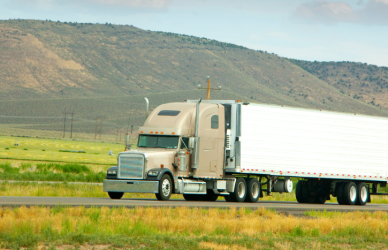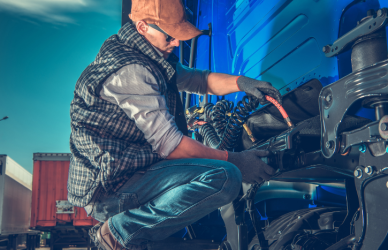Safety experts and regulators have long been emphasizing the critical importance of wearing seat belts for truck drivers, highlighting the potentially tragic consequences for those who ignore this vital safety measure.
Recent data highlights the severity of the issue, revealing that nearly seven out of every 10 truck drivers killed in fatal crashes were not wearing seat belts. This statistic serves as a clear reminder of the need for greater attention to seat belt regulations among professional drivers.
In 2022, a total of 916 truck drivers lost their lives in crashes, with a staggering 69.3% of those fatalities attributed to drivers not wearing their seat belts, according to the National Highway Traffic Safety Administration’s Fatality Analysis Reporting System. This marks the second-highest percentage of drivers killed in crashes without seat belts since 2017, highlighting the persistent nature of the problem.
“We use this and other data to understand more about why this trend is continuing, why truck drivers are not using their seat belts, and countermeasures of how we can reduce this trend,” said Jessica Powell, a statistician in the agency’s crash data analytics division.
Despite the well-documented benefits of seat belts, some drivers neglect this essential and simple safety precaution.
“In a crash, a safety belt keeps the driver in place behind the steering wheel and in control of the vehicle while the vehicle absorbs the impact of the crash and decelerates, which prevents or reduces the consequences of an accident,” FMCSA said. “Safety belts, especially lap-shoulder belts, spread the stress and impact forces of a crash along the stronger and broader areas of the body, such as the hips and shoulders, limiting injuries and minimizing the possibility of truck occupants striking the steering wheel, shift lever, windshield, other objects, and other occupants.”
Regulations require drivers to use seat belts, and compliance is checked during inspections by CMV inspectors, as Adrienne Gildea, deputy executive director of the Commercial Vehicle Safety Alliance, emphasizes.
FMCSA regulations state, “A CMV which has a seat belt assembly installed at the driver’s seat shall not be driven unless the driver has properly restrained himself/herself with the seat belt assembly.”
Troopers patrolling the highways are vigilant in enforcing seat belt regulations, pulling over truck drivers without their seat belts, according to John Sova, a CVSA roadside inspection specialist.
Not wearing a safety belt is like rejecting a free insurance policy, as highlighted by FMCSA. The agency, along with safety organizations like the Insurance Institute for Highway Safety, debunk common myths surrounding seat belt usage, including beliefs that safety belts are unnecessary at lower speeds or that being thrown clear in a crash is preferable.
In reality, wearing a seat belt is a crucial safety precaution that not only protects the driver but also enhances overall road safety. By debunking misconceptions and promoting seat belt usage, we can strive towards a safer environment for all road users. Remember: Buckling up saves lives.
Source: Transport Topics












